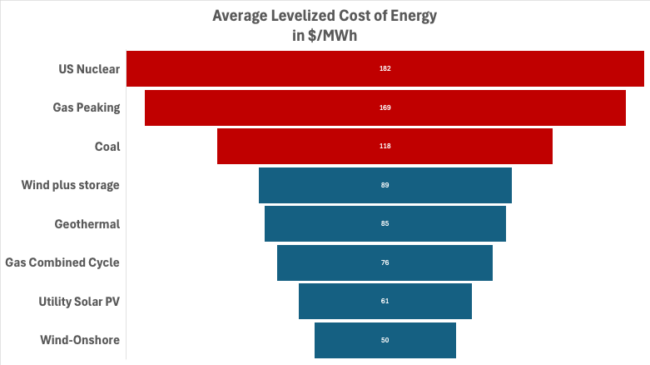By Anne Hedges
When Public Service Commissioners run for office, they always promise to ensure that Montana’s energy system will be reliable and affordable. Yet in recent years, as soon as Commissioners enter the door, they forget those promises and instead make decisions based on politics that dramatically increase electricity rates and undermine reliability by further isolating Montana from the rest of the electric grid.
Montana already has the highest electricity rates in the region, thanks to our monopoly utility, NorthWestern Energy. One large industrial customer recently announced it was shutting down a Montana division of its business, cutting high-paying jobs and citing rising electricity costs as the primary driver of the decision. The company’s vice president told the Daily Montanan, “Energy costs are a huge concern right now in the state of Montana.” That should have been a wake-up call for the PSC, but it’s unclear if they even noticed. They’re too busy patting NorthWestern Energy on the back for a deficient, opaque, and contorted 20-year plan for Montanans’ electricity system that will benefit the corporation’s shareholders while continuing to result in higher electricity rates for its customers (see article on pg. 22).

Why would the PSC allow NorthWestern Energy to pursue the most expensive energy generation?
If the Commissioners were truly concerned about affordability and reliability, they would look to the future and see that a modern, regional energy grid can solve both cost and reliability concerns. Thanks to our (albeit, aging) grid system, NorthWestern is able to buy excess power from other utilities across the West, and in turn NorthWestern is able to sell them power when they are in need. In the three short years since NorthWestern formally entered a newly developed short-term energy market to buy and sell power more efficiently, its customers have seen over $81 million dollars in benefits. Last year, NorthWestern was able to buy and sell about 2 million megawatt-hours of electricity to other utilities around the region, which kept prices down and the lights on – all thanks to the connected transmission system across the West.
But the aging grid system needs serious attention. Much of the existing interstate electric grid was built 50-60 years ago, when the Chevy Impala and the Ford Mustang were the most popular cars on the road and The Carpenters were topping the Billboard charts. Now we have computers, cell phones, data centers, cryptocurrency, and artificial intelligence gobbling up electricity at ballooning rates, supplied by a grid that has received very little investment and is struggling to keep pace. The grid has the potential to be the lynchpin for keeping the lights on and electricity affordable, but only if there is a plan to make that happen.
In May, the Federal Energy Regulatory Commission (FERC) released an order that was intended to do just that – make a plan for better coordination of the interstate electric grid. Order 1920 was broadly hailed as a crucial step in the right direction. The final order gives states the first-go at determining who should pay for new investments in the grid. If states fail to decide who pays, FERC will be the backstop by allocating costs based on a predetermined contingency method. Even FERC’s former Trump-appointed chair, Neil Chatterjee, said the order was “truly smart policy” and that “I would have definitely voted for it had I been at FERC.”
But the PSC apparently isn’t interested in smart policy. Nor is it interested in protecting affordable, reliable power through necessary long-term planning that prioritizes states’ input in the decision-making process. The PSC opposes the new rule, requesting a reconsideration from FERC, which is a necessary procedural step before one can sue over an order.
For years, Commissioners and NorthWestern have raised concerns about the reliability and affordability of the electricity system. Instead of looking to the future for a grid that relies on affordable and clean power generation that already exists, the Commissioners and NorthWestern are sowing fear of blackouts to justify building an unneeded, polluting gas plant and more ownership of the Colstrip plant. What they don’t mention is the fact that the gas plant will cost customers up to $2.3 billion. Nor do they say anything regarding the fact that no other utility in the U.S. is proposing to add more coal to its energy mix, let alone an outdated 40 year-old coal plant. Doubling down on coal power when the price of fuel alone for the plant has risen 37% since 2019 is a colossal economic mistake. Back-of-the-envelope calculations show that the Colstrip plant owners are paying over $200 million annually for coal to fuel the plant. It’s as if NorthWestern and the PSC think they are playing with monopoly money when these costs are really covered by NorthWestern’s customers’ hard earned dollars.
But the PSC’s most recent decision is the icing on the unscrupulous cake. When the January cold snap hit, half of the Colstrip plant was offline for so-called “maintenance” – something that is extremely atypical in the depth of winter. Fortunately, wind power was going gangbusters as the storm blew in and temperatures plummeted. Meanwhile, 750 megawatts of “reliable” fossil fuel power didn’t show up because the coal plant was broken and NorthWestern’s gas plants were not operating at full tilt either. What saved Montana customers from rolling blackouts? Sharing power with other states.
Unfortunately, Montanans seem stuck with a PSC that is more interested in partisan politics and enriching utility shareholders than planning ahead to provide affordable and reliable electricity for current and future Montana families and businesses.
This article was published in the July 2024 issue of Down To Earth.

